It’s spring and that means nesting time! In this article we’ll take a look at nests instead of a specific species. Birds come in all shapes and sizes, and need different habitats in which to thrive and raise their young. Similarly, nests too vary widely, from the tiny cups hummingbirds make to the huge piles of sticks needed by eagles and their offspring.
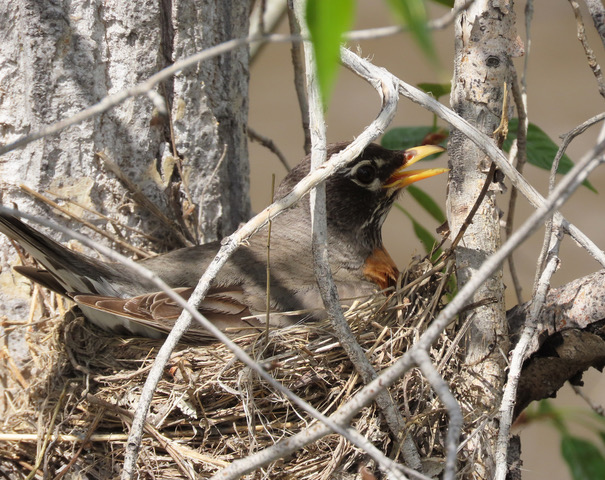
American Robin female on a comfortably lined nest
First, what IS a nest? A nest is a cradle, an incubator or a playpen, but it’s NOT a home. We humans tend to use the term ‘bird houses’ to describe artificial nest boxes we put up to attract birds to nest there. But that’s a misleading term, since birds don’t inhabit homes. We do. Once the nest has been used and is no longer needed by the young, it is abandoned. Perhaps it will be used again in subsequent years, but it is not a place where the family will reside.
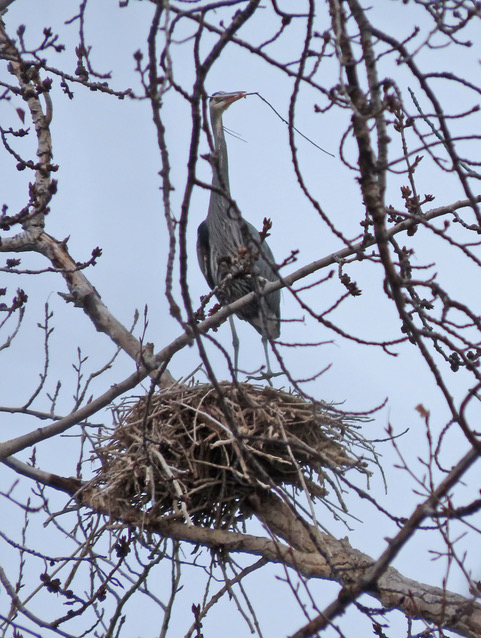
A Great Blue Heron repairing its somewhat flimsy nest
Just as birds have different requirements for food and safety they have similar requirements for their cradles. Some birds make their own nests, some take over the nests of others, some use cavities in trees or between blocks of cement, make tunnels in soft earth or set up in nest boxes, while still others use virtually no nest at all. Let’s take a closer look.
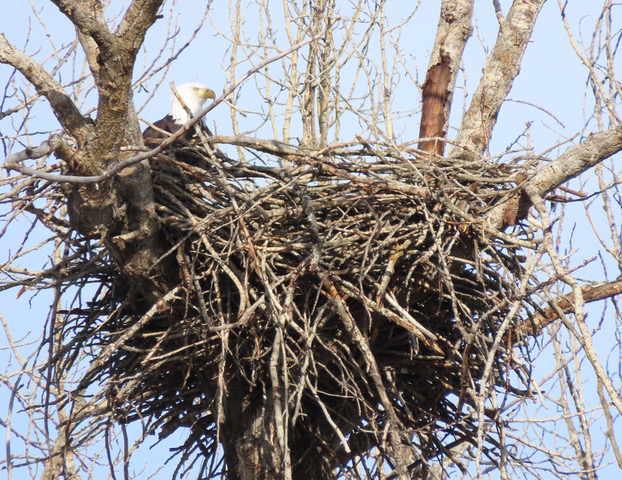
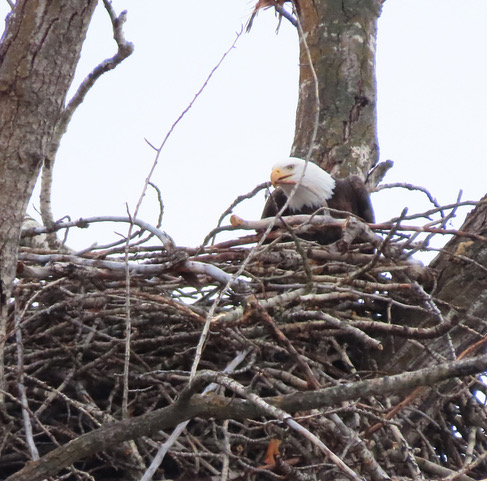
Bald Eagles at their huge nest; second photo shows the female repairing the structure
Birds construct nests to suit the size of their chicks; the location where the nest is created dictates much of the material they will use in its construction. Birds have been known to use sticks, stones, mud, plants and human-made artefacts. Many of their own feathers, down, and guano might also be used. Products from other species might include spider webs, snake skins, hair, fur, bits of shells or even cow pats. Binding materials from plants or animals hold the nest together. Some plant material is specifically chosen for its natural pesticide quality, which can help to sanitise the nest and reduce insect parasites. Some artefacts also seem to be included for the purpose of concealing the eggs from potential predators.
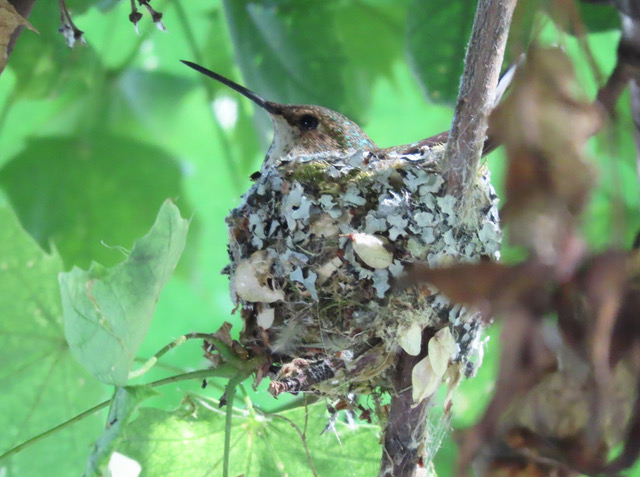
A tiny Rufous Hummingbird sitting on her nest
The lining of the nests is similarly varied. The eggs must be cushioned from breakage, for example, since the parent birds often rotate them to ensure even heat distribution to the developing embryos within. Feathers are particularly valuable for lining nests, providing soft insulation and protection. Birds that nest in burrows often reuse the remains from winter nests of squirrels or mice, or wood chips from trees that cavity-creating birds chip out with their beaks. An eagle’s nest needs to be robust enough to contain the large growing young until they reach maturity, a lengthy process.
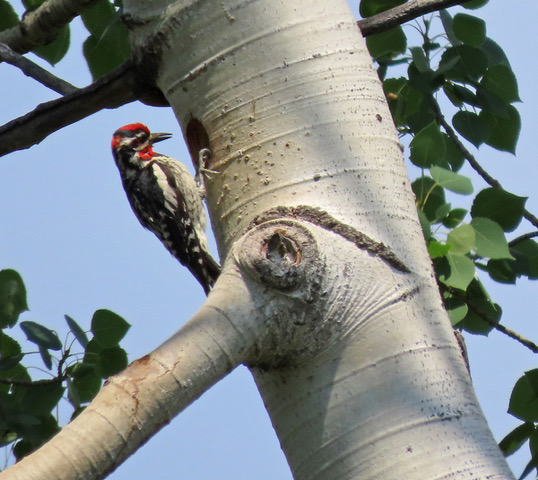
A Red-naped Sapsucker visiting chicks in a nest cavity
An important function of nests for ground-nesting birds is to act as a buffer from mud, sand or flooding. Some species have taken nest building to masterful heights, crafting elaborate hanging nests like those of orioles, or the colonial mud nests of some swallow species, clustered under overhanging eaves or lakeside docks.
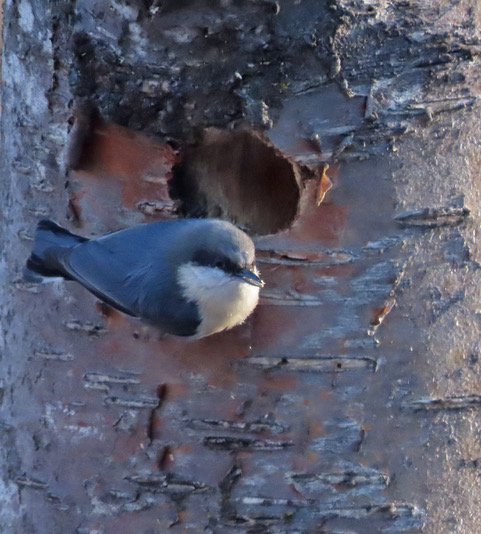
A Pygmy Nuthatch busy excavating a nest cavity
Because some newly hatched chicks such as those of quail or shorebirds are able to forage for themselves almost as soon as they hatch, the nests of these species are no longer needed once the brood has moved away. Particularly with shorebirds, for example, the nest is often barely more than a scrape on the ground, sometimes lined with material available nearby and open to view. The nest is quickly abandoned once the eggs hatch and the chicks are ushered elsewhere to forage. Cavity nests, by contrast, help to conceal and protect the precious offspring within until the young have fledged and no longer need the parents’ help finding food.
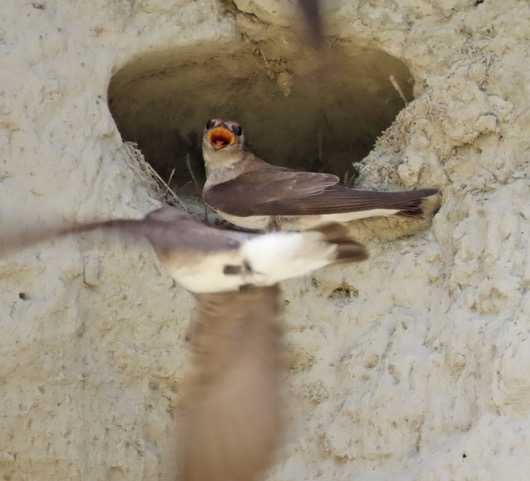
Northern Rough-winged Swallows nest in shallow tunnels in soft earth
Large nests of hawks or osprey nests on platforms are often commandeered in subsequent years by other species. I have seen Red-tailed Hawks’ nests used by Great Horned Owls, and Canada Geese frequently usurp the nest platforms of Ospreys, taking up residence before the migrating Ospreys return. It must be quite a shock to see squatters in your nursery!
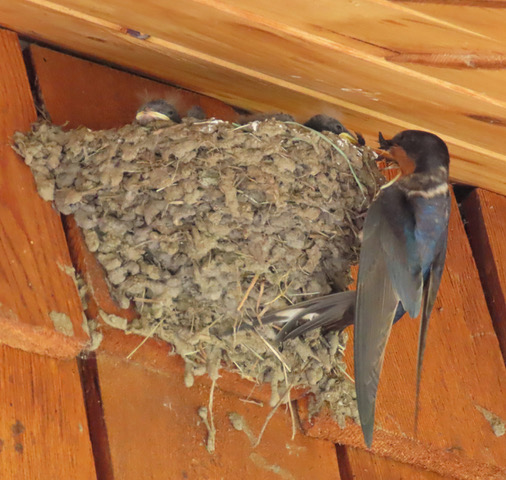
Barn Swallow adult feeding nestlings in her mud nest on a lakeside cabin
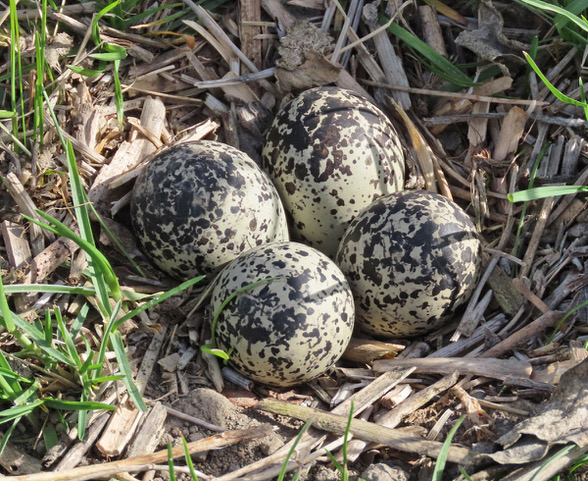
Killdeer eggs in an exposed nest in a field near a pond
Pam Laing
Okanagan birder

Wonderful Pictures Pam